
|
The Islamic Republic of Iran |
|
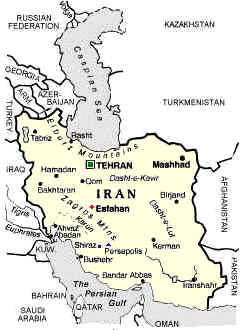 |
AREA: 1,648,000 sq km (636,296 sq miles). POPULATION: 59,778,000 (official estimate 1994). POPULATION DENSITY: 36.3 per sq km. CAPITAL: Tehran. Population: 9,982,300 (1991). TIME:GMT + 3.5 (GMT + 4.5 from March 20 to September 21). ELECTRICITY: 220 volts AC, 50Hz. Plugs have two round pins. Religion: Predominantly Islamic; mostly Shi’ite, with a minority of Sunnis. The 1976 census recorded 300,000 Christians, 80,000 Jews and 30,000 Zoroastrians. Statistics: |
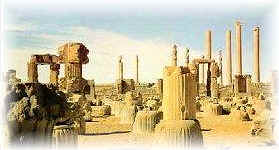 |
Persepolis (Shiraz) (521-331 BC – 60km northeast of Shiraz)
Persepolis wurde etwa 50 Jahre vor der Akropolis in Athen erbaut und war von 521 bis 331 v. Chr. die Hauptstadt des achämenidischen Reiches. Begonnen wurde der Bau unter Dareios I. und fortgeführt von Xerxes I., Artaxerxes I., Xerxes II., Dareios II., Artaxerxes II., Artaxerxes III. und Dareios III.
Im Jahre 331 v. Chr. wurde die Stadt von Alexander dem Großen zerstört.
Magnificent sights of Shiraz:
- Naghshe Rostam and Naghshe Rajab (700-224 BC – 10km northwest of Persepolis)
The Fire Altars (700-224 BC – 10km northwest of Persepolis)
Stone Tower (700-224 BC – 10km northwest of Persepolis)
Passargade (550-521 BC – 130km northeast of Shiraz)
Tomb of Sa’di (1209-91), Tomb of Hafez (1324-91)
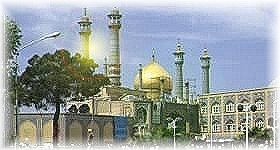
Qom
Qom, das etwa 140 km südlich von Teheran liegt, ist die wichtigste Ausbildungsstätte für Geistliche im Iran. Die Universität wird vom Staat kräftig unterstützt. Der bekannteste Student und Theologe war der spätere Staatspräsident Imam Ajatollah Khomeini, der von hier aus den Kampf gegen das Shah-Regime begann.
Wann Qom gegründet wurde ist nicht feststellbar, wurde aber im Jahr 816 zum Pilgerort, als Fatima Masumeh, die Tochter des siebten Imam auf ihrer Reise nach Tus zu ihrem Bruder erkrankte und hier starb.
Die Stadt wurde 1221 von den Mongolen zerstört. Im 16. Jahrhundert erblühte die Stadt von neuem als Pilgerort. Das Grabmal der Fatima Masumeh ist ein großer Komplex, umgeben von hohen Ziegelmauern. Die goldene Kuppel über der Grabkammer ist aus 12.000 Goldplättchen hergestellt und 32 m hoch.
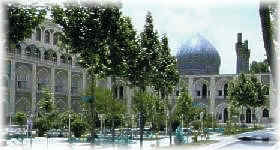
Isfahan
(4-5 Jahrhundert v. Chr.) Gegründet wurde Isfahan etwa im 4-5 Jahrhundert v. Chr. in der Zeit der Achämeniden. Während der Regierungszeit der Parther war Isfahan Hauptstadt, zur Zeit der Sassaniden Heerlager. Viele Juden haben sich ca. 400 v. Chr. im Stadtteil Yahudiye angesiedelt, da die Frau von König Yazdsgred I. Jüdin war.
1397 Eroberung durch Timur-e Leng (Tamerlan), der 70.000 – 200.000 Einwohner abgeschlachtet haben.
Magnificent sights of Isfahan:
- Imam Mosque (1612)
Sheikh Lotfollah Mosque (17th century)
Chehel Sotoon Palace (1657)
Aali Ghapoo Palace (17th century)
Hasht Behesht Palace (8 Paradises – 14th century)
Menar Jonban (Shakable Minarets – 14th century)
Si-o-Se Pol (33 Arched Bridge – 1600)
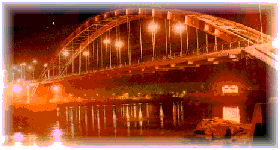
Ahwas
Soth West Iran, on the Karun River. It is an oil center, a transportation hub, and an industrial city that has petrochemical. its the centre of Khuzestan Province.
This city has been built on the sediments of the Tertiary period.
| Die Persische Kochkunst: |
| Bagali Shevid Polo (Lima Bean with Dill Rice) Ab-gousht (Meat drippings) Chelo Safeed (Iranian style white rice) Kabab kubideh (grilled ground meat) |
Magnificent sights of Iran:
Kashan:
Tappe (Hill) Si’alk (15th millennium BC)
/>Fin Historical Garden (1522)
Maidan Mosque (1436-44)
Hamadan:
Tomb of Avicenna (1307)
Tomb of Baba Taher (1019)
Gonbad-e Alavian (Alavian Dome – 12th century)
Shrine of Esther and Mordecai (339-420)
Borj-e Ghorban (Ghorban Dome – 12th century)
Ganj Nameh (700-330 BC)
Kermanshah:
Bistun (700-330 BC – 32km from Kermanshah )
Tagh-e Bostan (224-651 BC – 6km northeast of city)
Temple of Anahita (200 BC – 90km east of Kermanshah)
Mashhad:
Shrine of Imam Reza (9th century)
Gowharshad Mosque (1405-1418)
Harunieh Mausoleum (750-1257)
Mausoleum of Khajeh Rabi (16th century)
Tomb of Ferdowsi (23km from Mashhad – 1020)
Neishabur (112km west of Mashhad):
Tomb of Omar Khayam (10th century)
Tomb of Attar (12th century )
Shrine of Mohammed Mahroogh (1570)
Yazd:
Chak Chak Zoroastrian Fire Temple (52km north of Yazd)
Atashkadeh (Zoroastrian Fire Temple – 478 AC)
Jameh Mosque (1324-64)
Dollat Abad Gardens (1502 1736)
Kerman:
Ganj Ali Khan Complex (1502-1736)
Moayedi Ice Reservoir (1037-1335)
Imam Mosque (Former Malek Mosque – 1073-92)
Gonbad Jabalieh (3rd century AC)
Literatur:
IRAN – Ein Reiseführer: von Thomas Herberg, Max Kasparek Verlag, ISBN 3-925064-13-3
Sehr guter, leicht zu lesender Reiseführer, mit vielen Erläuterungen und Schemazeichnungen zu den Baudenkmälern und Geschichte
IRAN – Reisehandbuch: von Hans Berger, Conrad Stein Verlag, ISBN 3-89392-231-8
echter Reiseführer wie man es gewohnt ist, viele Informationen, handliches Format. Für unterwegs der Beste.
Reiseland IRAN: von Yvonne Schmitt, Edition aragon, ISBN 3-924690-78-2
recht ausführlicher guter Reiseführer, der umfangreichste im Angebot
Reise durch den Iran: von Jean Hureau, Verlag Farhangsara Yassavoli, ISBN 964-306-027-6
Schöner Bildband in deutscher Sprache, der durch das ganze Land führt und alle Sehenswürdigkeiten berücksichtigt.
The fabulous Land of Iran: von Javad Yassavoli, ISBN 964-306-016-0
umfangreicher Bildband in englischer Sprache, zeigt alle Facetten des Landes in schönen Bildern.